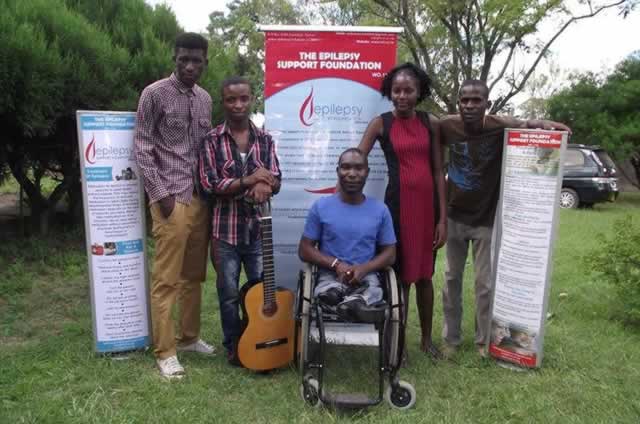Epilepsy: Moving beyond mysticism

Alois Vinga
Like many conditions, epilepsy is a misunderstood phenomenon often couched in mysticism and negativity.
In fact, people often mistake seizures for epilepsy, thereby clouding their understanding and response to the condition.
Dr Gift Ngwende, President of the Zimbabwe League against Epilepsy and Specialist Physician In-Charge of Epilepsy and Neurology clinics at Parirenyatwa’s Group of Hospitals, explains that there is a difference between seizures and epilepsy.
He said in an interview recently: “It is very important to define two terms which are often incorrectly and interchangeably used. For us to define epilepsy we have to understand the concept of a seizure. A seizure is defined as a sudden, abnormal, and excessive electrical discharge from the surface of the brain known as the cortex.
‘‘The human brain is like one giant sophisticated electrical circuit and a seizure is like a short circuit that disrupts the normal functioning of the brain. Most people would often think of a seizure as a convulsion but one can get a seizure that manifests in other ways like blank stares or disorientation.”
On the other hand, epilepsy is defined as repeated or recurrent unprovoked seizures or a predisposition to repeated unprovoked seizures.
“In general and there are exceptions, a single seizure event does not constitute epilepsy. In general the causes of epilepsy are unknown in as much as 60-70 percent and it can be assumed that the causes are probably genetic. With respect to children, the causes are multiple and this list is by no means exhaustive. Oxygen deprivation around the time of delivery (hypoxic-ischemic encephalopathy) is probably the biggest contributor to childhood epilepsy.
‘‘Other causes include early infections such as meningitis, brain abscesses, early jaundice (yellowing of the eyes and skin), congenital intrauterine infections such as toxoplasmosis and rubella. Prolonged low blood sugars in newly born babies may lead to irreversible brain injury that may cause epilepsy. Birth trauma with bleeding into the brain may also cause childhood epilepsy.
“Then there are seizures that occur within the context of fever (febrile convulsions). As one might realize good antenatal care and obstetric management can reduce some of the complications that lead to the development of epilepsy.’’
Finding ways
Taurai Kadzviti, the Research and Advocacy Office at the ESFZ, notes that lack of systematic research on the condition in Zimbabwe “is one of the causes perpetual ignorance”.
“There is urgent need for all key stakeholders to commit themselves to finding a way to help those living with the condition. Policy measures must critically address the plight of the vulnerable through ensuring their presence across all sectors of governance,’’ said Kadzviti.
Dr Ngwende says there has to be a concerted effort to bring epilepsy “out of the shadows” using various fora.
“This is one of the main focuses of the World Health Organization, International League against Epilepsy and the International Bureau for Epilepsy. I hope that the ZLAE and the Epilepsy Support Foundation will work in conjunction with the Ministry of Health and Child Care to reduce the social stigma and ignorance around this very treatable condition.
“We also need to work with our religious leaders and traditional healers in terms of reducing stigma around the disease, as they are often the first port of call for individuals with seizure disorders. Basic first line medications with a better side effect should be made available in public sector health institutions. Zimbabwe also needs to train more health care workers who are able to diagnose and treat epilepsy appropriately,’’ he said.
Young people should be involved.
Tinei Mavhunga, the ESF National Youth Coordinator, said that fighting epilepsy required youths living with condition to begin depicting themselves as normal people as this will eliminate poor self-imaging and fight the dependency syndrome which is typical of the disabled youths.
Rutendo Gwatinyanya, ESFZ acting director, said there was need to avail medication and information to all centres, especially rural areas where most of the sufferers reside.
“Raising awareness at ward and district levels while fostering unity between faith healers and traditional healers and medical specialists is an important fact that will see those living with the condition moving out of the shadows,’’ she said.










Comments